What Census Data Can Tell You About Your Community via US Census Bureau
1. Is your community gaining or losing population?
Revitalization efforts should differ markedly between fast growing versus declining areas and
between areas where growth/decline is uniformly spread versus those in which it is
concentrated in specific locations. For example, new constructions programs that may be
appropriate in fast growth, newer areas may be counter-productive in declining ones that
contain older housing stock suitable for rehabilitation. Understanding the growth patterns of
surrounding communities is also useful in developing regional alliances. Note that rapid
population growth coupled with stagnant household growth may be an indication of crowding.
2. What’s the age profile and household makeup?
As people age and form households, they typically pass through a housing life-cycle: moving
from the parental home to forming independent households (usually renting) to buying a first
home and having children, trading up to a larger home, becoming empty-nesters, and aging
either at home or in an institutional setting. While this life-cycle has many variations, it is clear
that the community needs of an area which is primarily composed of married couples with
children will differ from the one with high shares of elderly singles. An awareness of the types of
households living in the community (and how these types are changing) will help you to develop
and target programs most effectively.
3. How have ownership/renter rates changed over time?
Nationally, the homeownership rate and number of homeowners rose significantly over the
1990s as the economy prospered. Understanding how these outcomes changed locally will
help you measure progress, remaining need, and possibly (along with program data) the impact
of homeownership promotion programs. Note that you should analyze both the change in the
homeownership rate and the number of owners. The number of owners may still have
increased even if homeownership rates decreased (if the number of renters rose at a faster rate
than the number of owners). Analysis of homeownership progress by age and by race will give
additional insights into underlying causes of homeownership change and whether progress is
being experienced equally by different groups.
4. To what extent are households paying large shares of their incomes on housing?
High cost burdens are the primary housing problem faced by most households. Measuring the
numbers and shares of owners and renters with large burdens will help quantify the extent of
the affordability problem and help you determine the relative emphasis to place on programs
devoted to enhancing affordability vs. housing adequacy/accessibility or other concerns.
5. What is the community’s income/poverty profile?
The Census provides data on overall income levels, poverty rates, income derived from
earnings, and the number of households receiving income assistance of various types.
Whether targeting the “poorest of the poor, “ focusing on mixed-income development, or
assisting those who are making a welfare-to-work transition, these data will help you measure
and locate populations of particular concern.
6. How is the community changing in terms of race and ethnicity?
To be used effectively, programs must be understood by their intended clients and must be
sensitive to cultural differences. Certain parts of the U.S. are undergoing profound changes in
the ethnic makeup of their populations and in the languages spoken by residents. Knowing the
size and growth of the immigrant and ethnic populations, their length of time in the U.S.,
countries of origin and the languages spoken at home will help you to tailor programs for
maximum effectiveness.
7. What are the characteristics of the community’s housing?
Are the homes in your community primarily single-family, multi-family, or manufactured? Mostly
old or mostly new? Large or small? Expensive or inexpensive? The Census provides data on
all these characteristics as well as the availability of kitchen and bathroom facilities, telephones,
and cars. Unit age is one indicator of potential rehabilitation needs. Unit size, when analyzed in
conjunction with measures of crowding in the same area, indicates potential needs for rehab,
new construction, or programs that promote geographic mobility. Data on home values, in
conjunction with incomes, help you quantify the size of the income barrier to attaining
homeownership.
8. What is the educational profile of your community?
Education is the key to higher income, career advancement, and homeownership attainment.
Census data allow you to identify the educational levels of residents, the location of those with
low educational attainment, and occupational characteristics. These factors are critical in
developing, locating, and targeting educational and training initiatives.
9. What share of the population have physical disabilities?
As the population ages, the importance of adapting housing to allow those with disabilities to
remain at home (if they wish) becomes increasingly important. Understanding the size of the
disabled population, its rate of growth, and where the disabled live will help you create, enhance
and target programs that improve accessibility.
10. How has occupation and industry makeup changed?
Occupation and industry data are important to understanding the economy by tracking labor
force trends and identifying new and emerging occupations and the changes taking place in
your community. Occupation describes the kind of work that a person does on the job. Industry
refers to the kind of business conducted by a person’s employing organization. How has the
makeup of your community’s workforce evolved and changed? Are more women seeking jobs
outside the home? Has the work itself changed? Which sectors have grown or declined?
Occupation and industry data provide a window on changes taking place in your community,
reflected by the work people do.

